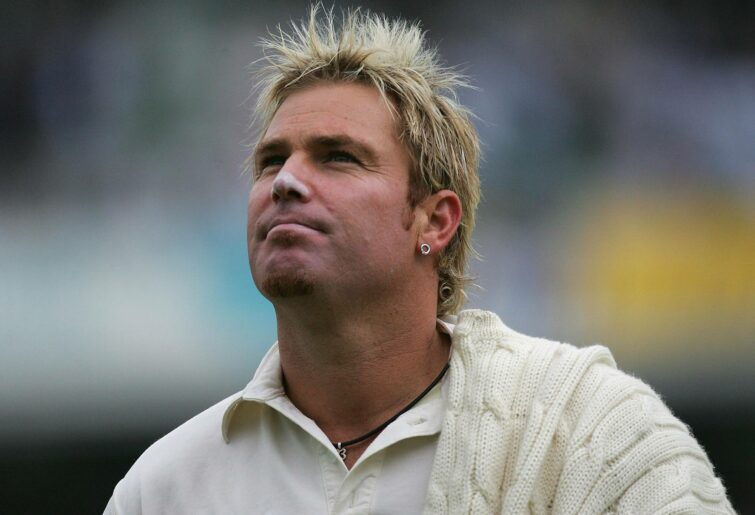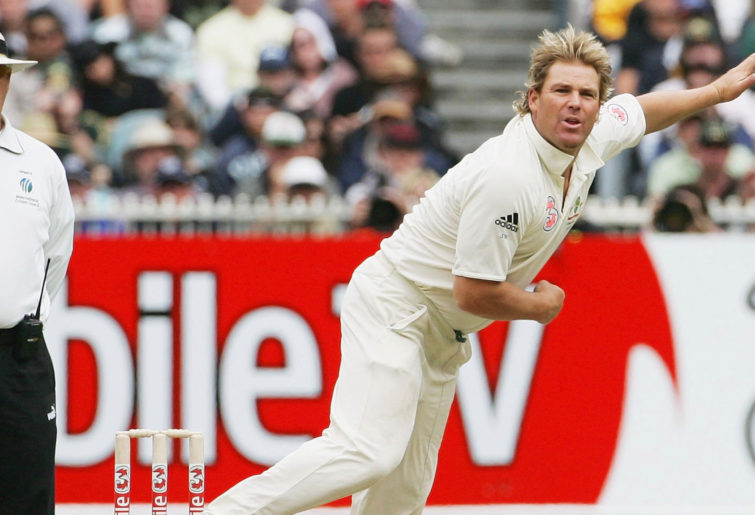World Cup chances up in the air but Smith makes Major call on T20 future, Green dumped despite huge IPL deal
Test great Steve Smith is to play for Washington Freedom in the second season of Major League Cricket as the Australian influence in the…
Opinion
It came as a shock when the news hit that Shane Keith Warne was no longer with us.
This was someone who captured the heart of almost every cricketer far and wide, who not only admired his tenacity and spirit but attempted to emulate his ability to turn, bounce (sometimes not bounce) and rip that circular leather thing with such energy.
He was an idol for many who left an incredible mark on cricket and will be missed.
Lots has been said and written about Warnie since his passing. Many wonderful stories have been shared that highlight the competitor, the larrikin, the celebrity and the charity worker. However, I wanted to reflect on his legacy of spin bowling. We have heard so many stories of people reflecting on his influence on them, but what did this legacy mean for Australian cricket?
Warne retired from international cricket in 2006-07, which means it’s been 16 long and unfulfilling years since he hung up his boots. In that time Australia has used 15 different spinners.
Warne didn’t exactly light up the stage when he made his debut on 2 January 1992. An unflattering return of 1-150 from 45 overs suggested that perhaps he was a long way off from making an impact in international cricket. He was given another chance with a tour of Sri Lanka, where he returned figures of 3-158 of 38 overs in two Tests. Between his second test series and the moment he burst onto the scene with ‘that’ ball to Mick Gatting he had taken only 17 wickets at an average of over 30.
At the time, the Australian selectors were faced with the dilemma of whether to continue to select a wayward, big spinning leggie who had the potential to win matches for his country or look to the more experienced and accurate Greg Matthews, who had performed with consistency during the Sri Lankan tour prior to that 1993 English tour.
What the selectors showed at the time was faith. They felt that Shane Warne had the ability, temperament and X factor to carve out a successful career in international cricket. Thank God they did. If it wasn’t for the contribution of the peroxide-haired, ear-pierced larrikin who took 708 Test wickets, Australian cricket may have fallen by the wayside a long time ago.
So what is Shane Warne’s legacy? At the height of his powers every kid in school playgrounds was imitating his action. They were imitating his angular run-up, his grunt and his chin stroke after each delivery. They were even imitating his bleached hair and party lifestyle.
However, when we look back at the spinners that have come and gone after Warne, we see that Australia has used 15 different players, many of which played only one or two tests. We essentially took over England’s role of rotating spinners until one lucks out, sticking with them for a few Tests and then discarding them and looking for a new one.
Since Warne we have seen the likes of Beau Casson (one Test, three wickets), Dan Cullen (one Test, one wicket), Nathan Hauritz (17 Tests, 63 wickets), Brad Hogg (seven Tests, 17 wickets), Stuart MacGill (44 Tests, 208 wickets), Cameron White (four Tests, five wickets), Jason Krejza (two Tests, 13 wickets), Bryce McGain (one Test, no wickets), Steve Smith (85 Tests, 18 wickets), Xavier Doherty (four Tests, seven wickets), Steve O’Keefe (nine Tests, 35 wickets), Michael Beer (two Tests, three wickets), Nathan Lyon (108 Tests, 427 wickets), Ashton Agar (four Tests, nine wickets) and most recently Mitchell Swepson (two Tests, two wickets). That’s a combined total of 811 wickets.
This speaks volumes about the state in which Australia is producing spinners.

(Photo by Hamish Blair/Getty Images)
So where did it all go wrong? If Shane Warne was such a figurehead and someone who so many were aspiring to be like, how come we have used so many spinners for such little success? What’s more concerning is that of that list of 15 spinners, fewer than half are wrist spinners.
First of all, the spotlight needs to be shone on junior cricket and the development of spinners. Junior coaches, parents and teachers would all agree that there are plenty of players who would like to emulate their spin heroes. Not only has there been a lot of young Warnies willing to practice their flippers, toppies and googlies, but more recently there are young cricketers trying to follow in the footsteps of Graeme Swann, Muttiah Muralitharan, Ravichandran Ashwin, Daniel Vettori and Nathan Lyon.
No-one will ever doubt that junior coaches have the best interest of their players at heart, but unfortunately many don’t have the experience or knowledge to help nurture and develop them into first-class cricketers.
Unfortunately, cricket is a sport that has recently seen a decrease in participation across all ages. In particular the older junior groups have seen a significant change in numbers. Therefore the resources clubs have at their disposal are very limited. They don’t have the funds to be able to send every coach off to develop their skills through state-run qualifications, so all of a sudden someone’s parent, who has volunteered their time, is in charge.
However, they may lack knowledge of the art of spin. The grip, the run-up, the gather, the follow-through are all critical components in having the ability to bowl consistent and potential wicket-taking deliveries. So unless this coach has played the game or has spent time upskilling themselves through well-structured coaching programs, the junior spinner is left to develop this difficult art through imitation alone.
Coupled with this lack of spin bowling knowledge, Australian juniors are playing on hard synthetic pitches. This results in a constant bounce that most batsmen can predict and play cross-batted shots for as they can trust the bounce. Each junior spinner will be told to toss the ball up and entice the batsman down the wicket; however, the batsman, apparently the intelligent breed of cricketer, has solved the puzzle and plays the spinners from the crease.
Despite following their coach’s best intentions, spinners either struggle to take a wicket because the ball has spun past the bat or go for plenty. Imagine the patience needed to keep pursuing this skill considering their teammate at the other end would be going for fewer runs and could take more wickets just by bowling seam up.

(Photo by Hamish Blair/Getty Images)
The solution? Coaches need to continue to advance their knowledge and ability to articulate the technical and mental components to spin. They play such an important role in the development of young spinners – it cannot be underestimated. Coaching courses, seminars, webcasts, podcasts, books and websites all need to be attended, participated in and read in order to learn different ways in which to coach and nurture these spinners.
Furthermore, each coach needs to tweak their coaching philosophy to incorporate patience. Allow a spinner to develop by providing encouragement, positive feedback and defensive fields. By setting attacking fields with only one in the deep, in particular during the first couple of overs, you are not allowing any room for bad deliveries. Juniors will make mistakes, drop one short or throw in a full toss – that’s the nature of their development. Having defensive fields allows room for mistakes and will keep their confidence high with a low economy rate.
Can we have greater exposure to turf grounds and pitches? We have the structures and competitions in place, but are they supported by local councils who coordinate the grounds? Turf pitches are common in England for kids from as young as ten. They are exposed to the conditions that their heroes are playing, and it enables their techniques and skills to develop in the environment that they will play in at the top. This also means that deliveries from spinners are more likely to hit the stumps, to get a leg before. Ground staff in England produce great turf pitches for juniors and still have the ability to prepare decent wickets for senior cricket.
How come this practice isn’t in place in Australia? Perhaps it’s the funding or the weather, or maybe it’s just the demanding councils that don’t allocate enough time to curators.

(Photo by Hamish Blair/Getty Images)
Maybe the answer is in the development of a cricket ball that doesn’t bounce as much. Still have the dimensions, the seam and hardness of a regulation Kookaburra but without the density to prevent that shoulder bouncing ball.
Possibly we have been looking at it from the wrong angle. Perhaps the answer is in how good Shane Warne really was. Confused? Most will admit that his control and consistency were very rare. Stuart MacGill, who spun the ball greater than Warne, struggled to match his constant line and length..
Maybe the answer is in the trajectory and speed at which a leggie should deliver it. Look at Anil Kumble. The quick, bouncy and flat leg spinner took 619 test wickets and might hold the answer for our next leg spinner. For most juniors, bowling quick leg breaks might be difficult to begin with, but due to the speed and angle of delivery they are less likely to be hit across the line and belter from deep mid-on to deep mid-wicket. All it would take is to convince the slow medium pace kid to try his hand at turning his wrist over – it will bring him a lot more wickets and a lot more success that might lead to further honours.
Finally, a call out to the Australian selectors. Nathan Lyon solved this dilemma and has carved out an amazing career of over 100 Tests. Picked from obscurity from the roller, his consistency and guile have meant he has become our most successful finger spinner. But he won’t last on the scene forever, and who is coming behind him? Is Mitch Swepson our next frontline spinner who will spin us to win on a Day 5 pitch? Is Tanveer Sangha someone who is showing the signs of being the next Australian matchwinner?
What the selectors need to do is to pick a spinner they think will win matches for Australia and give them a chance. The aforementioned list of 15 spinners highlights the brutality and temperamental approach they have taken to the selection of our national team.
Spin bowling. Ask any coach and it’s one of the most difficult aspects of cricket to coach. From the technical, mental and tactical side it’s a daunting prospect that, unless approached with passion and enthusiasm, could result in another decade without a matchwinning spinner once Nathan Lyon leaves the game.
Shane Keith Warne is a great of this game and has left so many incredible cricket memories behind. The art of spin bowling and in particular wrist spin is his legacy, so now it’s time for us to re-energise this craft and to breathe life into what Warnie did best.